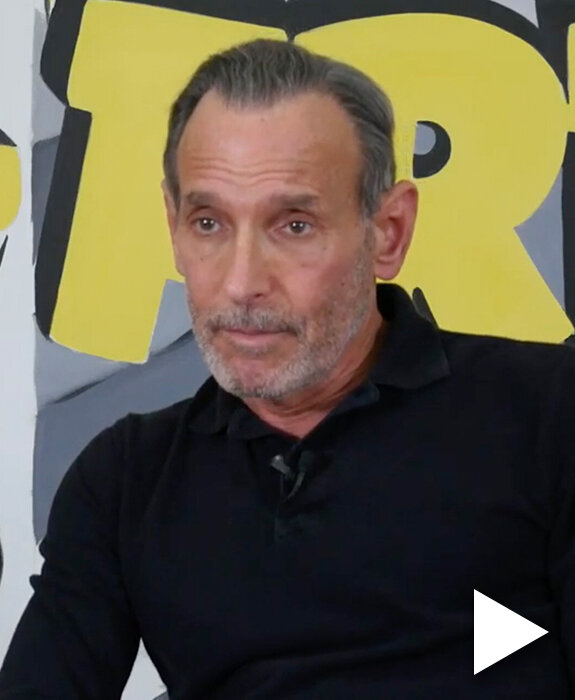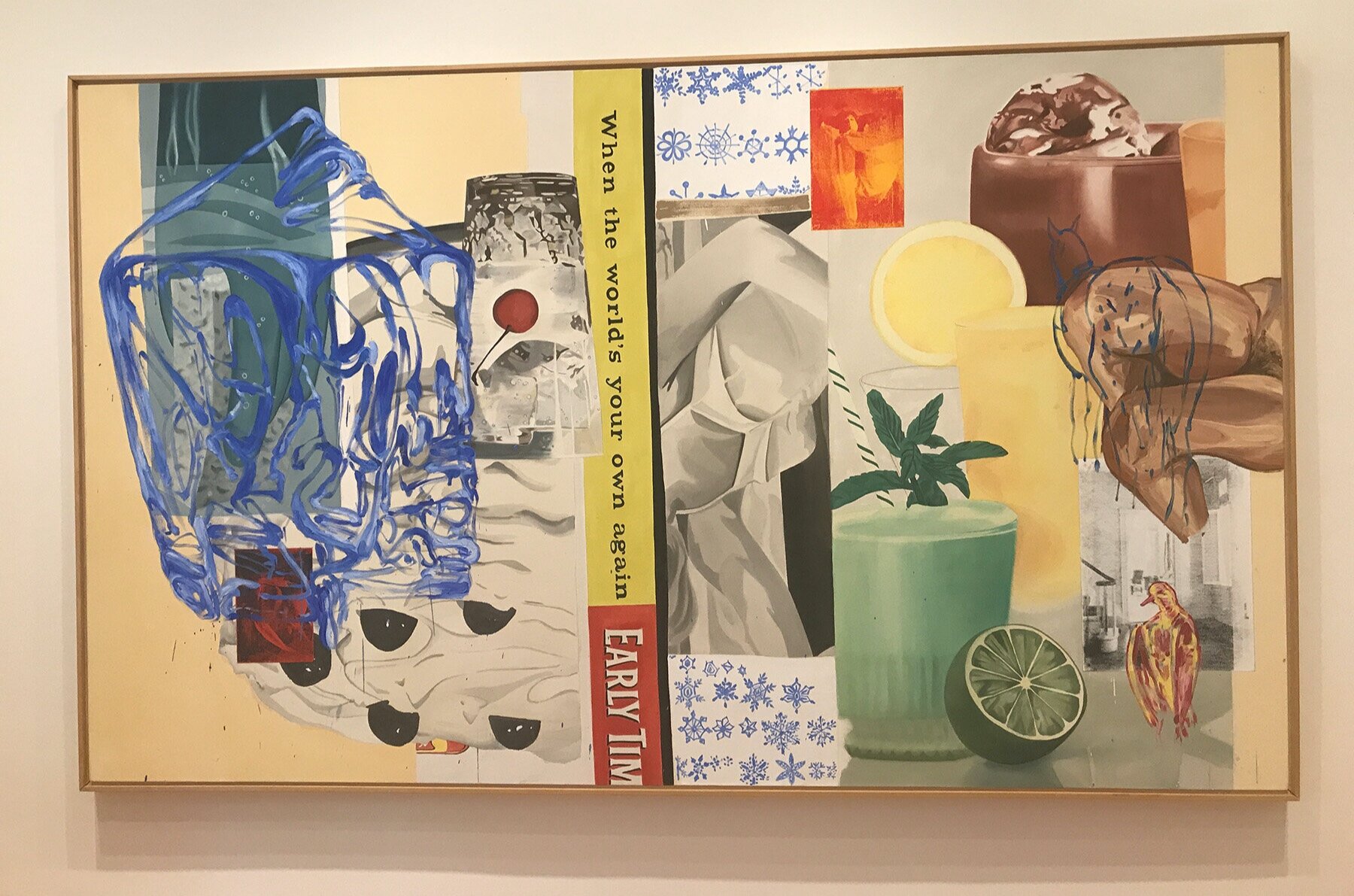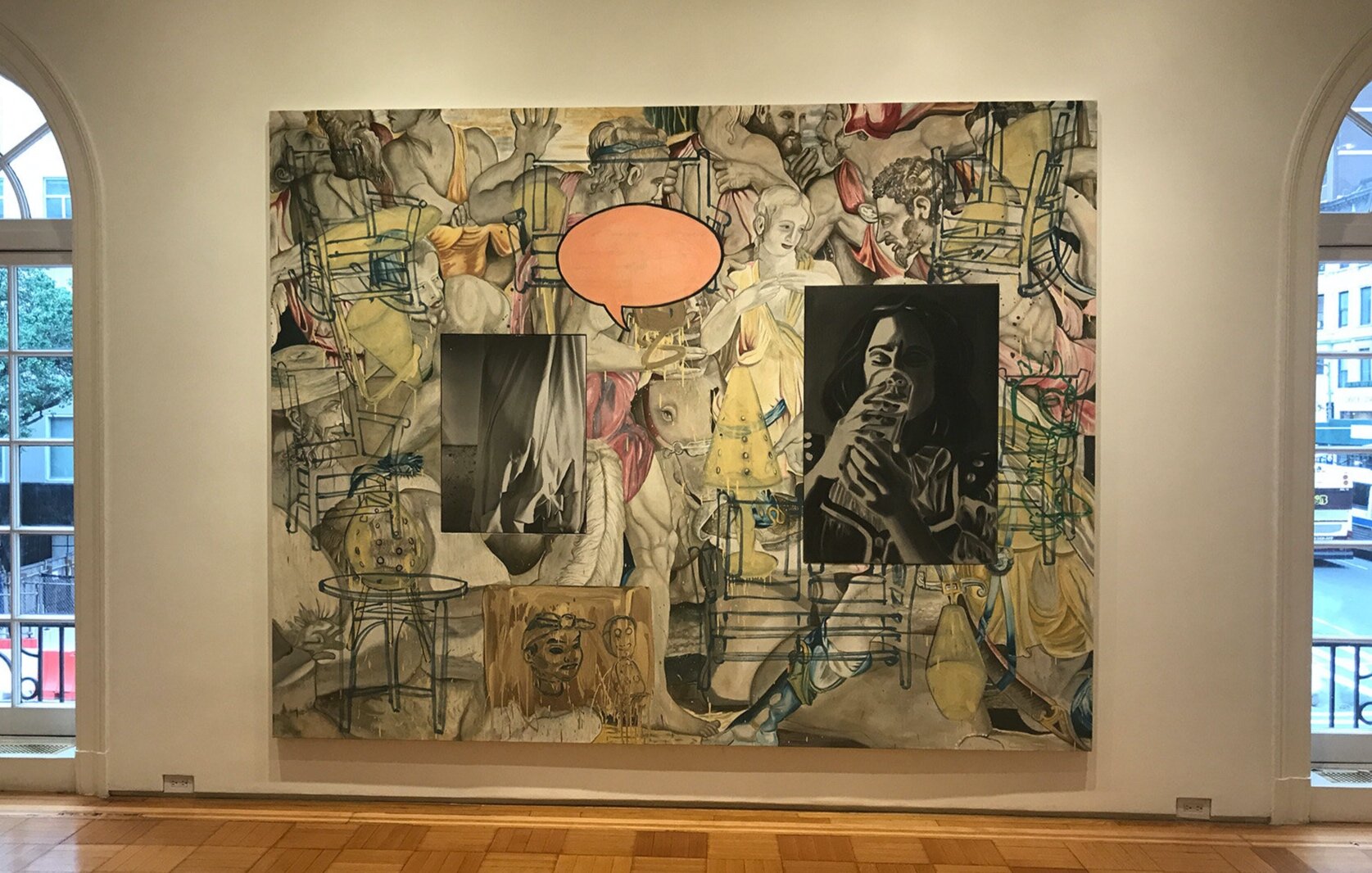David Salle
DAVID SALLE
“If you’re a painter, you make meaning at the end of a brush by organizing forms, by defining light and shadow, by creating a visual rhythm, by creating a visual sense of space while working primarily with color, or all of the above combined. Line, shape, color, form, texture, composition and imagery – all these things have to work simultaneously. That happens in the doing. So, the ‘doing’ is in ‘living’ that endeavor.”
David Salle was born in 1952 in Norman, Oklahoma and raised in Wichita, Kansas. Showing an early aptitude for drawing, he studied at an independent art school, the Wichita Art Association, through high school. Well-versed in the formal aspects of art making, Salle went on to the newly formed California Institute of Arts in Valencia, where he earned both his BFA and MFA. He studied with John Baldessari, whose post-studio aesthetic instilled a broad sense of experimentation in his students. There Salle embarked on works in film, performance, video and installation. He moved to New York in 1975. Emerging from his academic training and the anti-art traditions of CalArts, David Salle, dubbed a neo-expressionist, developed an evolving body of work that not only captured the zeitgeist of the 1980s and onward, but its sense of simultaneity and excess. His unique visual syntax and dramatic pictorial structure would propel him to the forefront of American art.
Something of a polymath, David Salle has created works in theatrical set and costume design, photography, sculpture, film and writing. His 1995 directorial debut resulted in the feature film, Search and Destroy, produced by Martin Scorsese with actors Ethan Hawke, Dennis Hopper and Christopher Walken. An accomplished writer, Salle’s essays and art reviews have been published in Art Forum, Art in America, Modern Painters, Town and Country, The Paris Review and Interview. He is a regular contributor to the New York Review of Books. His acclaimed book, How to See: Looking, Talking and Thinking About Art, a 2016 W. W. Norton publication, is a compilation of engaging essays on artists both past and present.
David Salle’s art has been collected by leading institutions worldwide including the Museum of Modern Art, Solomon R. Guggenheim Museum of Art and the Whitney Museum of American Art in New York; the Art Institute of Chicago and the Museum of Contemporary Art in Chicago; Los Angeles Contemporary Museum of Art; Nationalgalerie, Berlin; the National Gallery, Washington, D.C.; the Saatchi Gallery, London; Stedelijk Museum, Amsterdam; the Tate Gallery, London.
The Artist Profile Archive interview with David Salle took place in his Brooklyn studio in 2019. Additional footage features three distinct exhibits at Skarstedt Gallery, New York City: At First Glance: Fischl Sculptures and Salle Photographs, 2019, and two solo exhibitions, Paintings 1985 - 1995 in 2018 and Ham and Cheese and Other Paintings in 2017. Also filmed was Salle’s 2019 exhibition at the Parrish Art Museum in Water Mill, NY, which featured three monumental paintings commissioned by Museo Carlo Bilotti, Rome. The works, titled variously After Michelangelo, The Creation; After Michelangelo, The Flood; and After Michelangelo, The Last Judgment (2005–2006) were based on the Sistine Chapel.
“I grew up in Wichita, Kansas – almost the exact geographic center of the United States. A small city that had little grace notes of some cultural institutions. One of them was a school, an independent art school that was not affiliated with any university – a kind of 19th-century atelier model of an art school that was run by a husband and wife, two artists who had made a commitment to regionalism in the 1930s. I started working with them around 1960. It was the most wonderful art education imaginable, certainly at the time.”
“I went to CalArts as a painter, and the first year I diligently painted away. But, by the second year it was apparent that the most interesting kids were not painting. So, I cast my lot with those people who coalesced around the figure of John Baldessari, one of the principle inventors of this thing which became called conceptual art. His class was called Post-Studio Art, which simply meant you were not making drawings, paintings or sculpture. I spent four years working with John, both as a student and as a studio assistant. He became a friend and mentor to me as well. That experience totally reoriented my compass from what I had thought art was about when I was young.”
“Look at paintings by Jackson Pollock, for example...what they represent is an acute musicality and compositional organization and rhythm and counterpoint with very definite, schematic underpinnings that he absorbed by studying old master compositions, specifically Titian and Veronese – the same artists I learned to diagram when I was a kid. If you study enough Veronese paintings, you quickly learn how to line up diagonals and verticals and horizontals to intersect in such a way that it energizes the painting. It gives you a path; someplace to go.”






















